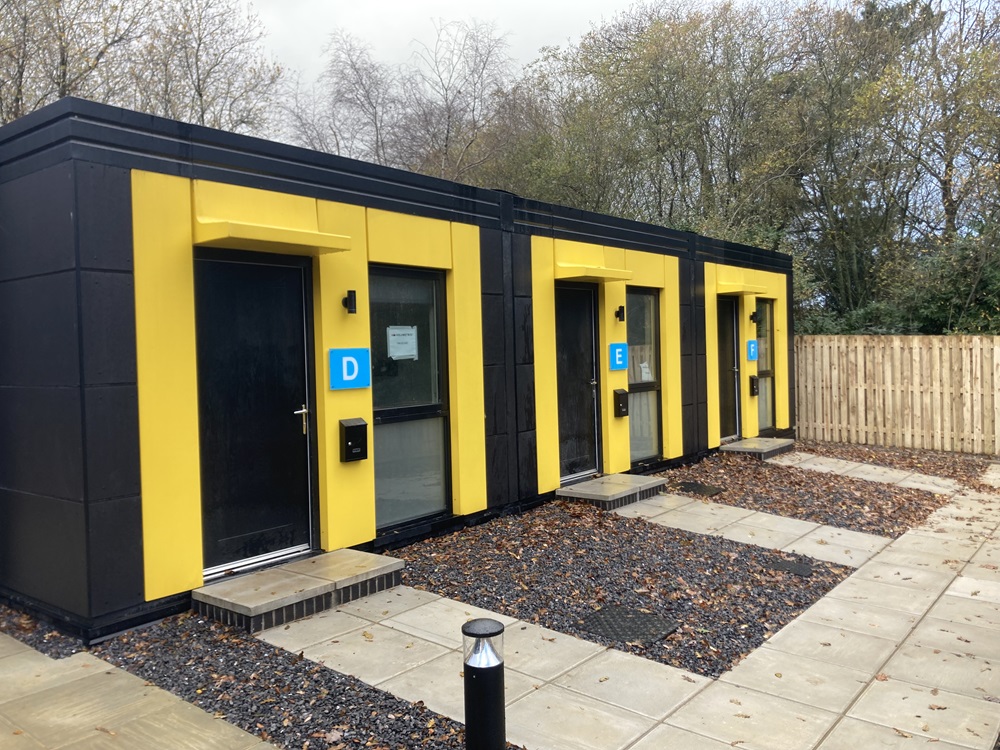
Seismic Considerations in Modular Construction: Building Safety Insights
In recent years, modular construction has emerged as a popular building method due to its efficiency and cost-effectiveness. However, when constructing modular homes in seismically active areas, it’s crucial to address seismic considerations to ensure the safety and durability of the structures. The primary focus of this article is on seismic considerations in modular construction, a vital topic for ensuring that homes can withstand the forces of nature.
Seismic considerations are particularly important in regions prone to earthquakes. By understanding these considerations, home enthusiasts can make informed decisions regarding the design and construction of their modular homes. This article delves into the various aspects of seismic design and how they apply to modular construction, offering a comprehensive guide for those looking to build safe and resilient homes.

What is Modular Construction?
Modular construction involves the prefabrication of building sections, known as modules, which are manufactured in a factory setting and then transported to the construction site for assembly. This method offers numerous benefits, including reduced construction time, improved quality control, and minimized waste. For more insights on modular homes, you can visit Architectural Digest.
The Importance of Seismic Considerations
Understanding seismic considerations is essential for anyone involved in the construction of modular homes, especially in earthquake-prone regions. These considerations play a critical role in ensuring the safety and stability of the structure during an earthquake.
Designing for Earthquake Resistance
One of the key aspects of seismic considerations is designing modular homes to resist earthquake forces. This involves incorporating features such as flexible connections and reinforced materials to absorb and dissipate seismic energy.
Site Selection and Preparation
Choosing the right site is crucial in minimizing earthquake risks. Factors such as soil type, slope stability, and proximity to fault lines must be considered to ensure the safety of the modular home. For detailed guidance on preparing your land, check out Preparing Your Land.
Structural Integrity and Materials
The choice of materials and structural design significantly impacts the earthquake resilience of modular homes. Using high-quality, durable materials and innovative design techniques can enhance the structural integrity and safety of the home.
Standards and Regulations
Adhering to building codes and regulations is essential for ensuring that modular homes meet seismic safety standards. These codes provide guidelines for designing and constructing earthquake-resistant structures.
International Building Code (IBC)
The International Building Code (IBC) sets the standards for construction practices, including seismic considerations. Compliance with these codes is mandatory for ensuring the structural safety of modular homes.
Local Seismic Codes
In addition to the IBC, local seismic codes may apply depending on the region’s seismic activity. Familiarity with these codes is crucial for ensuring that the construction process adheres to regional safety standards.
Innovations in Seismic Design
Recent advancements in technology have led to innovative solutions for enhancing the seismic resilience of modular homes. These innovations include advanced materials, smart design techniques, and the use of technology to monitor building performance during earthquakes. For more on the intersection of technology and modular design, visit Technology and Modular Design.
Base Isolation Systems
Base isolation systems are a cutting-edge technology that helps protect buildings from earthquake forces by allowing the structure to move independently of the ground motion.
Energy Dissipation Devices
These devices are designed to absorb and reduce seismic energy, minimizing the impact of earthquakes on the structure. Incorporating such devices can significantly enhance the safety of modular homes.
Case Studies and Real-World Applications
Examining real-world examples of modular homes designed with seismic considerations can provide valuable insights and lessons for future projects. These case studies highlight successful strategies and techniques for building earthquake-resistant modular homes.
California’s Modular Homes
California, known for its seismic activity, has seen significant advancements in modular construction with a focus on earthquake resistance. These homes are designed to withstand the region’s seismic challenges.
Innovative Projects Worldwide
Globally, several innovative projects have successfully implemented seismic considerations in modular construction, demonstrating the potential of this building method in various seismic zones.
The Future of Seismic Considerations in Modular Construction
As technology advances and our understanding of seismic activity improves, the future of modular construction looks promising. Continued research and development will lead to even safer and more resilient modular homes.
Emerging Trends
Emerging trends in modular construction include the integration of smart technologies, sustainable materials, and innovative design methods, all contributing to enhanced seismic resilience.
Collaborative Efforts
Collaboration between architects, engineers, and researchers is essential for advancing seismic considerations in modular construction. These efforts will help develop new standards and practices for building safe and sustainable homes.
Conclusion
Seismic considerations in modular construction are paramount for ensuring the safety and durability of homes in earthquake-prone areas. By understanding and implementing these considerations, home enthusiasts can build resilient structures that stand the test of time. For more information on modular homes, including cultural perceptions, visit Cultural Perceptions.

FAQ
What are the main seismic considerations in modular construction?
Key considerations include designing for earthquake resistance, site selection, structural integrity, and compliance with building codes.
How do base isolation systems work?
Base isolation systems allow a building to move independently of ground motion, reducing the impact of earthquakes on the structure.
Why is site selection important for seismic safety?
Site selection affects the risk of earthquake damage. Factors like soil type and proximity to fault lines influence a site’s suitability.
This article contains affiliate links. We may earn a commission at no extra cost to you.